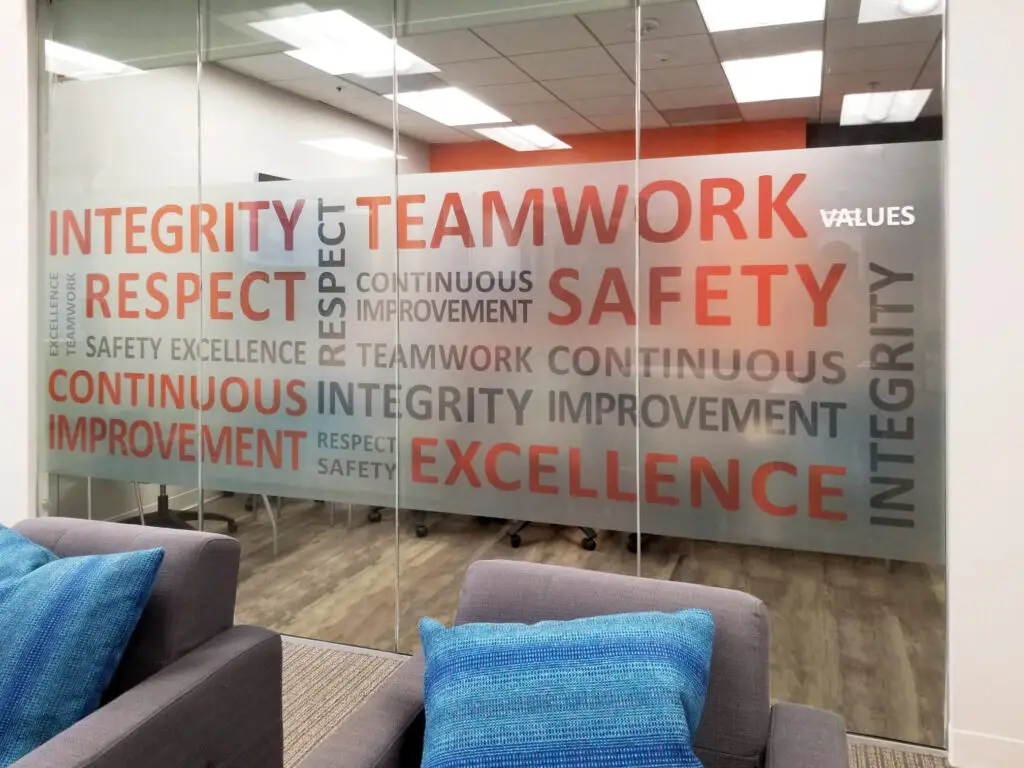
What’s the Difference Between Transparent, Translucent, and Opaque?
Those who are new to the world of window film often use the terms transparent, translucent and opaque interchangeably and with much confusion. However, each term refers to a different and specific quality, and once you understand the distinction, it is much easier to understand your options. Plus, it can save a lot of time clearing up any misunderstandings with designers, contractors, and vendors. So what’s the difference and where do you use each type?
What is Transparent?
Transparent means you can see through it without obstruction – this is the opposite of opaque. They allow all or very nearly all light to pass through it.
These include completely clear film, such as anti-graffiti film. When these films are applied to glass they are functionally invisible to the eye if you don’t look for the seams.
Transparent film can also have color or imagery printed on it and still be considered transparent as long as nearly all light can pass through. The film may have a color tint or a graphic, however you can still look through and see clearly and easily what is on the other side.
When To Use Transparent Glass Films:
Transparent clear films are used when you want a functional effect that does not spoil the look of glass. For this reason, anti-graffiti and safety films are manufactured clear. They can then provide added security and protection for property without changing the existing look. Transparency of these films are especially important for retail businesses where window displays are so important to draw in customers.
Transparent films with color or graphics should be used when you wish to add a design element and privacy is not a concern. They can be a great choice for spaces that have impressive views that you want to preserve.

What is translucent?
Translucent means you can partially see through it. Much light still passes through, but your vision is obscured in some way. With translucent glass films, typically one can see general shapes but not observe any details. Translucent films are commonly referred to as frosted films.
When to use translucent glass films:
Translucent films are wonderful when some degree of privacy is needed. They are a popular choice for workspaces where employees in glass offices can feel a bit like they’re in a fishbowl. By obscuring the details on the computer screens within the space, they provide another layer of security as well.
Furthermore, because they still allow a lot of light through, frosted films preserve the natural light and open feeling that is one of the great benefits of an office with a lot of glass.
In terms of design, translucent films may be applied over the full glass panels, or they may be cut as a band to leave clear glass at the top or bottom for partial visibility into a space. They may also be custom cut with patterns, logos, or other designs. Additionally, one may custom print on frosted films to add color and graphics for an even bolder look.


What is opaque?
Opaque means the opposite of clear – you cannot see through it. The film allows almost no light through.
One type of opaque material is blackout and whiteout films – which allow absolutely no light through.
When to use opaque films:
When total privacy or security is needed, opaque film is the answer.
Another common use for opaque film is mother’s rooms (also known as nursing or lactation rooms). Modern office spaces do not often have totally private spaces. Even if a room does not have exterior windows, it will often have a glass inset in the door. Opaque film is often used to create privacy in order to create an acceptable space for nursing mothers who have returned to the workplace.
Opaque film is also a great choice when you have an ugly view you’d like to remove. Perhaps there is a large HVAC unit just outside one of your windows, or maybe you have some unsightly pipes you’d like to hide. Opaque film is a simple way to instantly upgrade the appearance of a space.

The best of both worlds: Gradients
Most workspaces require some degree of privacy, but not the total visual security of an opaque film. Translucent films which obscure the view to some degree are one possibility, but another common solution for these needs is gradient film. Gradient film is printed with some sort of transition, most frequently between 100% Opacity white and clear film. They are usually 100% opaque at the bottom or center of the glass, and then gradually fade to total transparency. Infinite variations are possible based on one’s specific privacy needs: one can have 2 inches of 100% opaque before fading, or 102 inches of opaque. If the space that requires less privacy, perhaps a gradient that transitions from only 40% opacity to clear is the better choice. Because our gradients are custom printed, we can tailor it precisely to your particular needs.Ready to get started on your glass film project?
We hope that this article was able to clear up any confusion you had about transparent, translucent, and opaque window films! If you have any further questions or would like some assistance on your window film project, please reach out to us at MetWest!Jeśli interesuje Cię płatność w kasynach online przy użyciu Paysafe Card, zapraszamy do odwiedzenia strony https://pl.kasynopolska10.com/paysafe-card/, gdzie nasi partnerzy z kasynopolska10 dostarczają szczegółowych informacji na ten temat.
Recent Posts
Tags
Have Questions?
Aenean imperdiet. Etiam ultricies nisi vel augue. Curabitur ullamcorper ultricies nisi. Nam eget dui. Etiam rhoncus.
